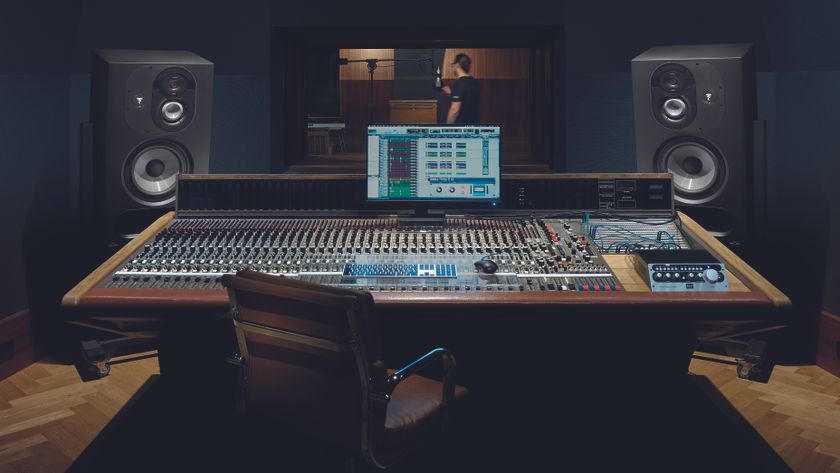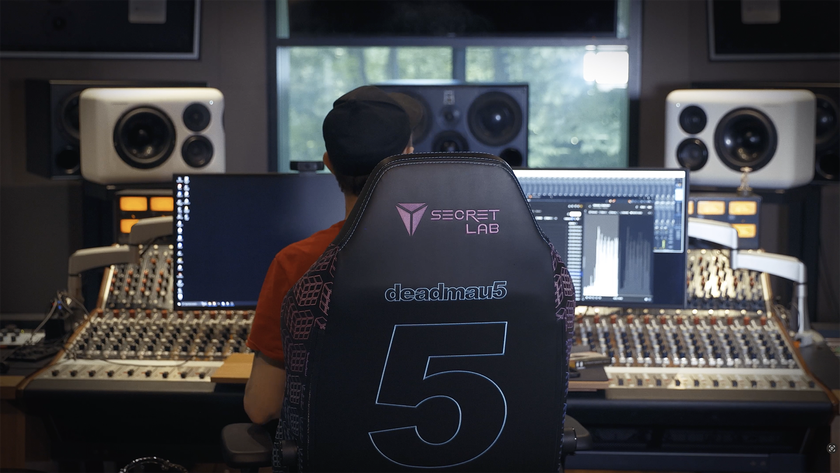Best in-ear monitors 2025: IEMs for stage and studio
Our expert guide to the best in-ear monitors for practice, performance and production, no matter your budget
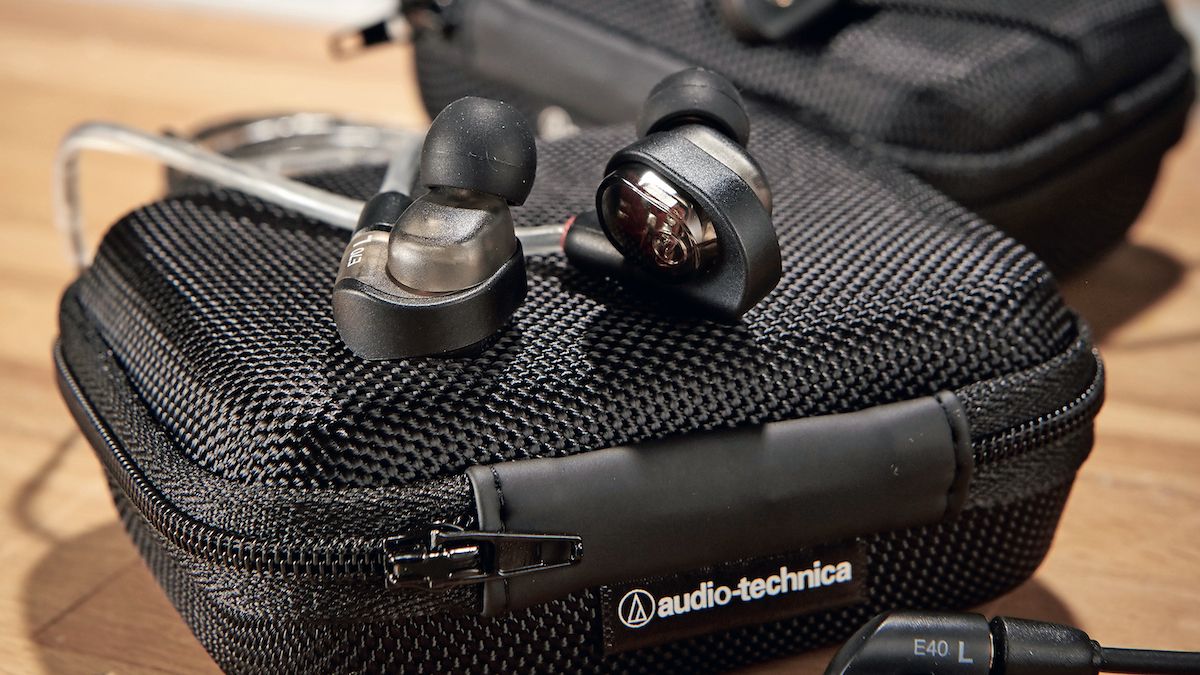
Deciding to incorporate a pair of the best in-ear monitors (IEMs) into your set-up is a confident step for any artist or band that has reached a certain stage in their performing journey. It signifies a commitment to taking things seriously and a desire to ensure that your fans hear the music exactly as you intend it.
The appeal of IEMs lies in two main reasons: receiving a clean, unaffected version of your sound directly to your ears, and protecting yourself from the high volumes associated with live performances. While on-stage wedges and side-fills can serve their purpose, nothing quite matches the level of control and aural accuracy that a quality set of IEMs provides.
In this article, we will take a closer look at the best in-ear monitor systems available right now, catering to every budget and application. Whether you're a seasoned professional or just starting to explore the world of IEMs, we've got you covered. From top-of-the-line options packed with cutting-edge technology to more affordable alternatives that don't compromise on sound quality, we've tested a wide range of options to help you find the perfect fit for your needs.
Right now, our top pick is the Shure SE846 Pro. If your budget will stretch, we cannot fault the pristine audio reproduction of these IEMs. We love the fit, too.
If you'd like to read more about the best in-ear monitors, then head to our FAQ section at the bottom of this guide. If you'd rather just get straight to our product recommendations, then keep scrolling.
Quick list
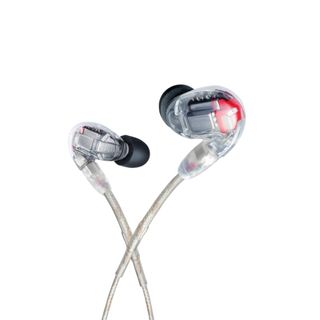
They may not look like much but these in-ear monitors absolutely blew us away with their combination of audiophile-level sound quality and fantastic isolation properties.
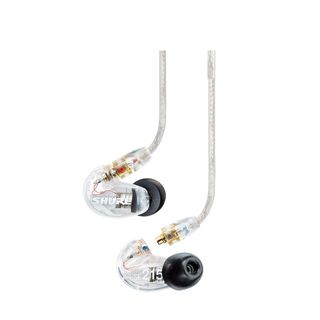
Arguably one of the best budget in-ear monitors you can buy, Shure's SE215 Pro is the perfect entryway to the world of professional monitoring on stage.
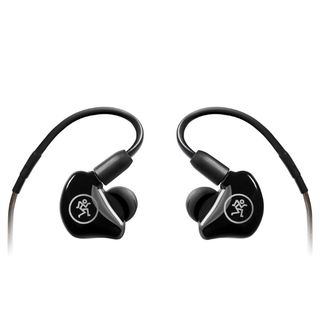
One of the significant factors in your choice of in-ear monitor is the amount of drivers, so two is always better than one! The Mackie MP-220 offer dual drivers for a fantastic price.
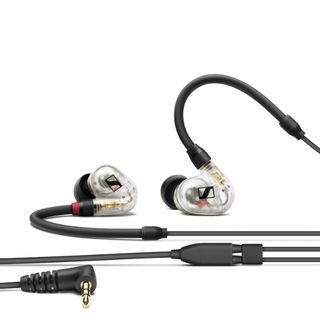
One of the most comfortable in-ear monitors we've ever worn, the Sennheiser IE 40 Pro excels at long listening sections thanks to a variety of replaceable tips.
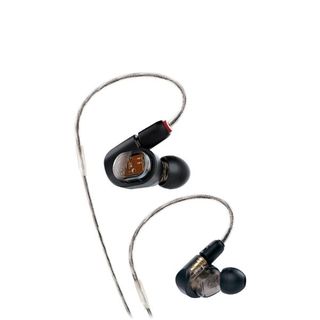
Sitting nicely in the midrange, the Audio Technica ATH-E70 provides the perfect step up from your first set of in-ear monitors thanks to three powerful drivers.
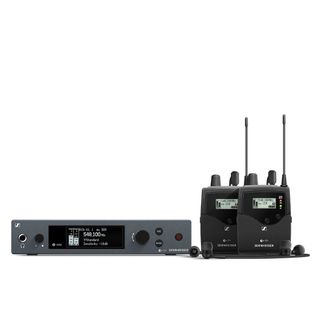
Perfect for the working musician, this full wireless kit is offers a solid connection reliably, with the excellent sound quality you'd associate with any Sennheiser product.
Load the next 3 products... ↓
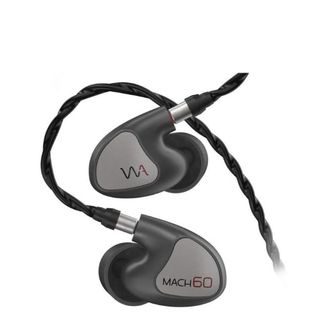
For rich tonal depth and crystal clear audio quality, it's hard to look past the Westone Mach 60. They'll handle any genre with ease with an immersive sound signature.
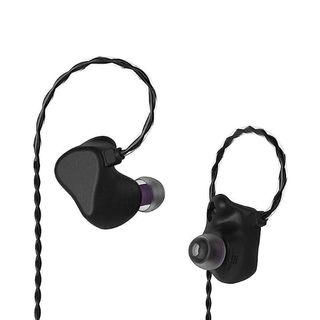
Sitting at the top end of the price spectrum, the InEar ProPhile-8 gives you eight internal drivers delivering supreme low-end and sparkly highs for pro-level sound quality.
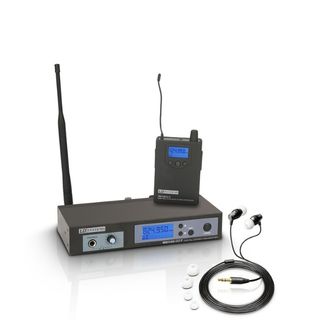
If you're looking for your first wireless set of in-ear monitors, then the LD MEI 100 is a great option. It includes transmitter, receiver, and earphones to get you up and running.
Best overall
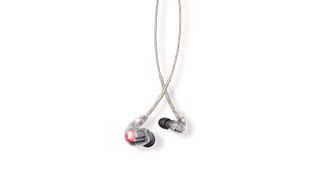
Specifications
Reasons to buy
Reasons to avoid
✅ Buy if you want the best sound reproduction: We simply cannot fault the audio quality with these IEMs. If you have the budget, there's no better choice.
❌ Avoid if looks are important to you: Brilliant in-ears, yes, but their styling is pretty pedestrian.
The problem that comes with reviewing in-ear monitors is that so many of them look the same. All across the price spectrum, you'll find generic 'clear plastic housing with various electrical gubbins' type arrangements. But, as we found out when we tested the Shure SE846 Pro, not all IEM headphones are created equal.
Basically, these blew us away. In terms of sound reproduction, you can see why the audiophile crowd gravitate towards them. A neat touch is the inclusion of a set of three 'nozzles', which can be interchanged to tailor the listening experience. But, importantly, they also offer up to 37dB of sound attenuation making them ideal for noisy stages and studios. You could conceivably not notice the apocalypse if you had these on and, with sound this good, the apocalypse can wait quite frankly.

"Delivering outstanding detail and clarity across the board, these top-of-the-line pro IEM's are some of the most capable earphones we’ve heard."
Read more: Shure SE846 Pro review
Best budget option
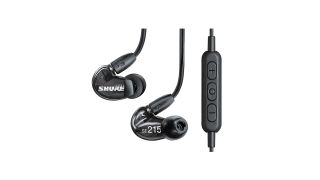
Specifications
Reasons to buy
Reasons to avoid
✅ Buy if you're stepping into the world of IEMs on a budget: For music performance and personal music listening you can't go wrong with this reliable pair of Shures.
❌ Avoid if sound is important to you: You won't find audiophile levels of sound reproduction here.
Shure is known as a real heavyweight in the world of sound recording and production, so we were expecting great things from the Shure SE215 in-ear monitors. Thankfully, our pick for the best budget in-ear monitors delivered.
Shure claims the SE215s block out around 90 percent of ambient noise, which makes them ideal for most musical applications. The thickened detachable cable also indicates a degree of ruggedness to them, although we did pick up some slight magnetic interference when they came into contact with our hands.
They're not high end - only one driver is employed here - however as an entry to the world of IEMs? We found the balance of sound quality, build quality and price to be very respectable. And, as a bonus, they are phenomenal when just used to listen to Spotify or the like. Overkill? Not at all...

"The Shure SE215 Pro in-ear monitors are a brilliant budget option, whether you’re looking for your first ever monitoring system, a pair of backup IEM’s or just some killer multi-use earphones. For under $/£100, Shure has nailed the value-for-money factor, offering great ambient noise cancelling, a decent frequency range and surprising levels of in-ear comfort."
Read more: Shure SE215 Pro review
Best dual driver
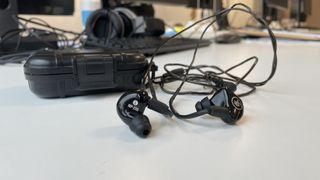
Specifications
Reasons to buy
Reasons to avoid
✅ Buy if you want dual drivers on a budget: You really will notice the difference when making the jump from single driver IEMs.
❌ Avoid if you have smaller ears: Some of our testers found these to be a little too snug.
When choosing a set of in-ear monitors, the number of drivers is a significant metric to consider. Budget models tend to offer only one, leaving the burden of reproducing every bass, mid and treble frequency to one single driver. Explore a bit higher up the range and you'll see why separating these out is important.
The Mackie MP-220 is a great example. By employing two drivers - one for highs, one for lows - we found that the sound quality had been improved immensely over other budget options. A snug fit in our ears from the earbuds provided good isolation too, making these an ideal first 'proper' set of IEMs for any budding performer.

"For budding performers, audiophiles or those who don’t want to spend the earth, the Mackie MP220 in-ear monitors are among the best. When most budget in-ears only offer one driver, the two-driver approach from Mackie is a welcome one - and puts the MP220’s a league above some of their budget rivals."
Read more: Mackie MP220 review
Best for comfort
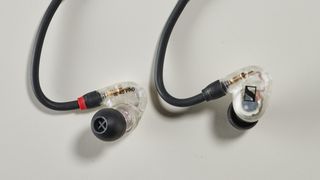
Specifications
Reasons to buy
Reasons to avoid
✅ Buy if comfort is key: A range of easily replaceable tips mean you'll get the ideal fit for your ears - important for long rehearsals or gigs.
❌ Avoid if you need a long cable: This is particularly important for drummers who need freedom of movement behind the kit.
Sonically, the IE 40 Pro sounds reasonably natural, with good articulation in the high frequencies and a full but not overpowering low end. They are quite bright in the top end at higher volumes, but this isn’t a deal killer.
Also rather positive is the comfort and fit. With a medium-sized in-ear module and quickly replaceable tips, we quickly achieved a decent fit - important for when we wore them for long stretches. In fact, we’d say these are some of the most comfortable off-the-shelf in-ear monitors we’ve tried; impressive given the modest price tag. Shame about the rather short lead (1.3m) and lack of lead extender.
The IE 40 Pro in-ear monitors deliver decent sonics without costing silly money and suit live use as well as general playback duties.

"A decent, pretty robust in-ear monitor; the selectable tips and mouldable cable deliver up a comfortable, secure fit."
Read more: Sennheiser IE 40 Pro review
Best mid-range option
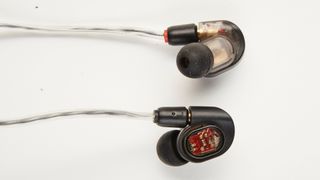
Specifications
Reasons to buy
Reasons to avoid
✅ Buy if you have a mid-range budget: You get a lot for your money with these IEMs, including wired memory cable loops for a secure fit around the ears.
❌ Avoid if you prefer a brighter sound: These in-ears definitely sit at the bassier end of the spectrum.
If you've spent out on a decent wireless system but found the included earphones are somewhat lacking, then don't fret; they are the easiest part to replace. And, as a step up, you'll want to look for something that improves the overall sound and ambient noise isolation.
We found the Audio Technica ATH-E70 to be just the ticket when it comes to choosing the best in-ear monitors for middling budgets. Sitting pretty in the midrange, these earphones feature three drivers which provided us with a balanced, accurate soundstage during testing. As a step up from the entry level, there is an increase in the cost but - if you've used basic 'phones for a while you'll certainly notice a difference in performance.

"A premium IEM. The comfort and sound quality make the E70s a serious rival to headphones for many situations."
Read more: Audio Technica ATH-E70 review
Best full kit
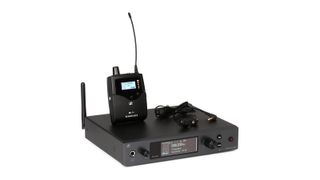
6. Sennheiser EW IEM G4 Twin
Our expert review:
Specifications
Reasons to buy
Reasons to avoid
✅ Buy if you want extra long range: The transmission range is 330 feet - you'll struggle to find a stage big enough to max that out.
❌ Avoid if you're buying it just for the in-ears themselves: As a package this is great, but there are better pair of in-ears out there.
Working musicians need to look a little higher up the chain when it comes to choosing the best wireless in-ear monitoring system for them. When your livelihood depends on providing a quality performance, night after night, then you need to be sure the gear you're using can cope. We found that the EW IEM G4 Twin from Sennheiser was the perfect fit for us.
The reputation behind Sennheiser offered us great assurance during our testing, and we were not disappointed. As one of the biggest names in audio transmission, Sennheiser can be trusted when it comes to its monitoring line-up. The G4 system is reliable, high quality and offers useful features like a 330 feet transmission range and easy synchronisation between transmitter and receiver via infrared.
Best sound quality
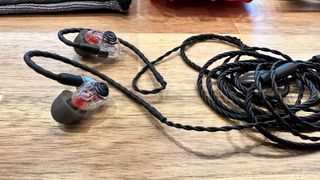
Specifications
Reasons to buy
Reasons to avoid
✅ Buy if you want multiple drivers: This pair features 6 drivers per bud for superb accuracy.
❌ Avoid if you want a better known brand: Westone Audio aren't as popular as Shure and Audio-Technica, but that makes them no less worthy of your consideration.
The Westone Audio Mach 60 set impressed us through seriously rich sound quality and versatility. Westone’s upper-midrange IEMs feature six balanced armature drivers, resulting in a detailed, balanced, and immersive sound signature.
We loved the Mach 60s’ ability to handle various music genres with finesse, capturing intricate details and providing a wide soundstage, while their build quality is solid and comfortable - although the design is perhaps lacking in terms of visual flair. We didn’t see this as a problem though.
The Mach 60s come with various accessories, including interchangeable faceplates and eartips for a personalised fit, along with a heavy-duty carry case. Overall, the Westone Audio Mach 60 are highly recommended for audiophiles and musicians seeking exceptional sound performance and flexibility.

"There’s a lot to like about the Westone Audio Mach 60 set. Comfort, accuracy and versatility combine to serve up a high performing overall package."
Read more: Westone Audio Mach 60 review
Best high-end
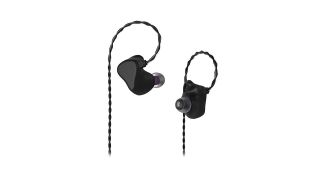
8. InEar ProPhile-8
Our expert review:
Specifications
Reasons to buy
Reasons to avoid
✅ Buy if you want uncompromising sound quality: Particularly if you're a touring musician, these in-ears are designed help you do your job better.
❌ Avoid if you want something basic and affordable: These are definitely over the top for most bedroom or hobby musicians.
At the other end of the price spectrum sit the InEar ProPhile-8. These, as you'd expect for the price, are a completely different kettle of fish, designed for the touring musician rather than the home studio enthusiast.
A total of eight internal drivers provide what we could hear to be the peak of balanced, powerful sound, while ambient noise absorption levels of around 26 dB ensured us superb on-and-off-stage isolation.
What stood out for us with the ProPhile-8 set was the frankly incredible transmission range. Everything, from the deepest sub bass through to the chimiest synth notes resonate with ease. So good, you might not want to take them off.
FAQs
Why do you need in-ear monitors?
A benefit of using IEMs is that you don't have to play as loudly on stage; often, particularly with drummers, musicians find themselves inadvertently competing with each other in order to hear themselves. This isn't an issue with IEMs, so you can employ a much defter touch without fear of those nuances being drowned out. Singers will also benefit by being able to much more precisely hear the notes they're hitting (or otherwise)...
At the top end of the price range, you'll find the headphone element of the system with all kinds of interesting tech involved. As with any headphones, the drivers are the parts that convert the electrical signal into something you can hear. Budget options may feature one or two drivers, but at the pro-level you'll find monitors with up to eight drivers. This offers benefits like extended frequency brackets or wider dynamic ranges, but you'll pay for the privilege.
Custom foam earbuds, taken from a mould made of the individual's own ear canal, are another option. This has superior noise-blocking properties, but ears can change over time so you may find this isn't a life-long solution and you may need to upgrade sooner than you think. Some musicians have also spoken of feeling a tad left out of the fun with this approach – if the noise-blocking stops you hearing the applause and noise of the crowd, what's the point, and did the gig even happen?
Do I need wireless in-ear monitors?
A good place to start when choosing the best in-ear monitors for you is deciding if you want to go with wired or wireless IEMs. Your answer will depend on what instrument you play. For drummers, in their (usually) static positions, it can often make sense to have that pure, wired sound as this provides no risk of audio dropout or interference.
Singers, guitarists, keyboard players and anyone else front of stage however would benefit from a wireless solution. These comprise a transmitter device, into which you plug the output from the mixing desk, and a receiver pack which takes a radio signal from the transmitter and feeds it into the monitors themselves. From here you can then decide if you want a full-band mix in your monitors, or selected parts of it.
How we test in-ear monitors
There are several factors we look at when testing in-ear monitors (IEMs), the most important being quality, comfort and isolation. This is similar to how we test regular studio headphones, but as IEMs are most often used on stage, isolation is perhaps a more notable consideration – you want to hear your own performance without being drowned out by the rest of the band playing around you. Obviously when testing IEMs, it's not always practical to set up an entire band onstage, but we do test isolation claims by using the IEMs in a variety of situations, both in the studio and on stage.
While IEMs are aimed at live musicians, they can also be used in the studio and some producers prefer their design over more traditional on-ear headphones that can be less comfortable. Isolation is still important here but perhaps more so is comfort. Do the IEMs sit well in your ears? Are they almost 'invisible' when wearing them as some regular studio cans can feel?
Sound quality is, of course, paramount and the more expensive models will offer more drivers and therefore better frequency response specs. We test IEMs against a range of well-known recorded music standards, and against other reference sets of in-ear monitors to test their sound. It's also important that they deliver this quality at lower volume levels as you don't want to have to crank up the output – part of the reason for choosing IEMs in the first place is to save your ears. Isolation will again play a big part here as you won't have to push the volume as hard if you are not getting so much external interference.
Finally, design quality and price are considerations plus, of course, wireless performance (unless they are wired!) in terms of operating distance, number of channels and stability and the associated battery lifetime compared to quoted statistics.
Read more about how we test music making gear and services at MusicRadar.
Why trust us?
☑️ MusicRadar established 2007
☑️ Over 5,000 reviews on-site
☑️ 30+ in-ears reviewed
MusicRadar first launched in 2007 and has been an authority on electronic drums ever since, rigorously testing the majority of key launches since day one. The site is run by a diverse team of passionate musicians who live to gig, record and jam, alongside a core group of trusted specialist freelance writers. We understands what players need, because we’re players ourselves, and we test from this perspective.
Our team have been testing music gear for 17+ years, constantly refining our methodology, delving deeper into products and drawing on our experience of what has come before to understand today’s products better than anyone.
Read more:
MusicRadar's got your back
- Try the best home studio mixers for all budgets
- Protect your hearing with the best earplugs for musicians
- Explore the best studio monitors available today
Get the MusicRadar Newsletter
Want all the hottest music and gear news, reviews, deals, features and more, direct to your inbox? Sign up here.
Chris Corfield is a journalist with over 12 years of experience writing for some of the music world's biggest brands including Orange Amplification, MusicRadar, Guitar World, Total Guitar and Dawsons Music. Chris loves getting nerdy about everything from guitar and bass gear, to synths, microphones, DJ gear and music production hardware.
- James Farmer
- Andy Jones
- Matt McCrackenJunior Deals Writer
